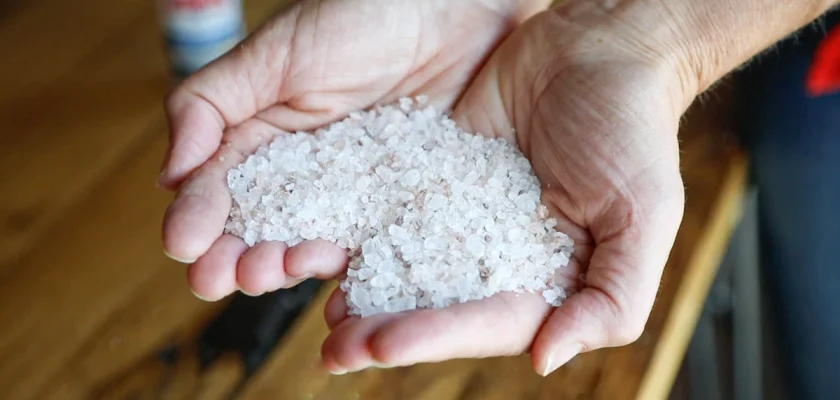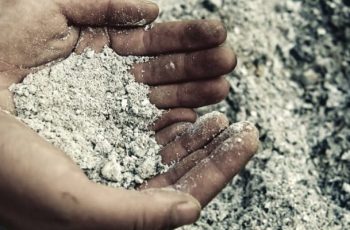Salt, a ubiquitous substance valued for millennia, has long been recognized for its potent disinfecting properties. Ancient civilizations intuitively understood its ability to preserve food, aid in wound healing, and maintain hygiene. Modern scientific research has validated these historical uses, confirming salt’s effectiveness in eradicating bacteria and other harmful microorganisms. The power of salt as a disinfectant stems from its capacity to dehydrate and disrupt the cellular structure of microbes, positioning it as a natural and environmentally friendly alternative to synthetic chemical disinfectants.

Salt exerts its disinfecting action primarily through the process of osmosis. When bacteria or fungi encounter a high-salt concentration environment, water is drawn out of their cells. This cellular dehydration leads to the disruption of essential biological processes and ultimately the death of the microorganisms. This osmotic effect effectively inhibits the proliferation of harmful pathogens, thereby mitigating the risk of contamination and infection. Beyond osmosis, salt can also interfere with crucial cellular functions within microbes, disrupting enzyme activity and altering internal pH levels, creating an environment inhospitable to their survival. Unlike harsh chemical disinfectants, salt does not leave behind toxic residues, making it a safer option for a wide range of applications in both domestic and commercial settings.
The historical use of salt as a disinfectant is deeply rooted in ancient practices. Egyptians employed salt in the intricate embalming process to prevent bacterial decomposition of bodies. Similarly, the Greeks and Romans applied salt directly to wounds as a means of reducing infection. Throughout the Middle Ages, salt was an indispensable ingredient in food preservation techniques, playing a critical role in protecting populations from foodborne illnesses. Furthermore, numerous traditional cultures recognized and utilized salt’s inherent healing properties. In Asia, saltwater rinses were a common practice for cleaning wounds, while European folklore often involved sprinkling salt in homes and public spaces to ward off disease. These early, often empirically derived practices laid a foundational understanding that paved the way for modern, scientifically informed salt-based disinfection methods.
Within households, salt serves as a potent yet natural cleaning agent. It can be effectively combined with other natural substances such as vinegar, lemon juice, or baking soda to create powerful disinfecting solutions for various surfaces. Sprinkling salt on cutting boards, sinks, and other kitchen surfaces aids in eliminating bacteria and neutralizing unwanted odors. Another popular household application is deodorizing and refreshing carpets. Sprinkling salt on carpets before vacuuming can absorb moisture and embedded bacteria, resulting in a cleaner and more hygienic environment. Salt also exhibits the ability to inhibit the growth of mold and mildew in damp areas, making it a useful tool for maintaining cleanliness in bathrooms and basements.
While salt is an effective natural disinfectant, it differs from synthetic chemical solutions in its mode of action. Unlike rapid-acting disinfectants like bleach or alcohol, salt works gradually by dehydrating and disrupting microbial cells over a period of time. While it may not provide immediate sterilization in all situations, it offers a natural and sustainable alternative for routine cleaning and disinfection needs. Chemical disinfectants, while often powerful, can contain harsh compounds that pose potential risks to human health, pets, and the environment. In contrast, salt is generally non-toxic, biodegradable, and widely available. However, in high-risk environments such as hospitals, stronger disinfectants may be necessary in conjunction with salt-based treatments to ensure comprehensive sanitation.
One of the most significant advantages of utilizing salt-based disinfection methods is their minimal impact on the environment. Unlike synthetic chemicals that can contribute to pollution and water contamination through the release of toxic byproducts, salt is a naturally occurring substance that readily biodegrades. Reducing our reliance on chemical disinfectants offers benefits to both human health and the delicate balance of ecosystems. Salt-based cleaning methods provide a sustainable approach to maintaining hygiene while minimizing the generation of harmful waste. Moreover, the widespread availability and cost-effectiveness of salt make it an accessible alternative for both households and various industries.
Ongoing research into natural disinfectants continues to uncover new and innovative applications for salt. Scientists are actively developing advanced salt-based antimicrobial coatings for medical devices, food packaging materials, and high-touch household surfaces. These coatings aim to prevent bacterial growth without the need for synthetic chemicals. Salt-infused air purification systems are also gaining traction in medical and wellness settings. By dispersing fine salt particles into the air, these systems can help reduce the levels of airborne pathogens and improve respiratory health, a technique known as halotherapy already utilized in some clinics and spas for treating respiratory conditions. Another promising area of development is the creation of salt-based water filtration systems specifically designed for disaster relief efforts. These systems offer the potential to effectively disinfect water in emergency situations, providing access to clean drinking water without the reliance on chemical additives.

In conclusion, the power of salt as a disinfectant has been recognized and utilized for centuries, and its relevance remains strong in our modern world. Its fundamental ability to dehydrate and inhibit the growth of microorganisms makes it an effective and natural alternative to chemical-based cleaning agents. From its applications in medicine and household cleaning to its crucial role in food preservation and water purification, salt continues to be a vital tool in maintaining hygiene and safety across various domains. While salt does have certain limitations in its disinfecting capabilities, its affordability, sustainability, and non-toxic nature make it a preferred choice for many. As scientific advancements continue to unlock new and innovative salt-based disinfection technologies, its potential to contribute to a cleaner and healthier world will undoubtedly continue to grow.

